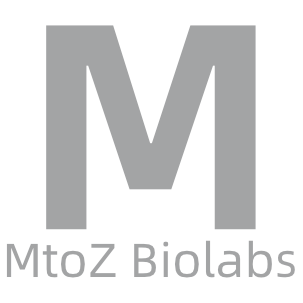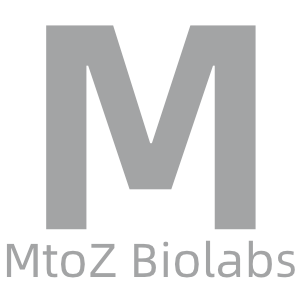Metabolomics Analysis
-
• 2-(Formylamino)Benzoic Acid Analysis Service
2-(Formylamino)benzoic acid is an aromatic carboxylic acid derivative formed by the formylation of the amino group in benzoic acid. It exists as an intermediate in certain metabolic pathways within living organisms, involved in the breakdown and transformation of aromatic compounds. The metabolism of 2-(formylamino)benzoic acid is closely linked to amino acid metabolism and the detoxification functions of the liver. During metabolism, it may be further converted into other metabolites or excreted from the b
-
• Hexanoyl Glycine Analysis Service
Hexanoyl glycine is a conjugate of hexanoic acid and glycine, and serves as a minor metabolite in fatty acid metabolism. It is particularly involved in the catabolism of medium-chain fatty acids, playing a crucial role in the body's energy production processes. In living organisms, hexanoyl glycine is formed through the glycine conjugation pathway, where hexanoic acid is activated and conjugated to glycine by the enzyme glycine-N-acyltransferase. This process facilitates the excretion of hexanoic acid, a me
-
Phenol is a simple aromatic compound composed of a hydroxyl group (-OH) attached to a benzene ring. Its unique structure gives it distinct chemical properties, including high reactivity and the ability to form hydrogen bonds. Phenol exhibits multiple biological activities and plays a role in various biochemical processes. It can act as an antioxidant by scavenging free radicals, and it participates in the formation of more complex phenolic compounds, which are involved in processes like inflammation, cell s
-
• Ribose-5-phosphate Barium Salt Hydrate Analysis Service
Ribose-5-phosphate is a crucial monosaccharide phosphate involved in the pentose phosphate pathway, a metabolic pathway parallel to glycolysis. It plays a vital role in cellular metabolism as a precursor for the synthesis of nucleotides and nucleic acids, which are essential for DNA and RNA production. Ribose-5-phosphate is generated through the oxidative phase of the pentose phosphate pathway and can also be converted into other sugars for various biosynthetic processes within the cell. The metabolism of R
-
L-Leucine is one of the nine essential amino acids in humans. L-Leucine is not synthesized by the human body and must be obtained through diet or supplementation. It is found in high concentrations in foods such as meat, dairy products, eggs, and certain plant-based sources like soybeans and legumes. It plays a crucial role in protein synthesis, cell signaling, and metabolic regulation.
-
• Ureidopropionate Analysis Service
Ureidopropionate is a compound that belongs to the class of ureidos. It is a product of the metabolism of pyrimidines, which are six-membered heterocyclic compounds containing two nitrogen atoms. Ureidopropionate is involved in multiple metabolic pathways and plays a crucial role in human physiology. Its abnormal levels have been associated with several diseases, like mitochondrial diseases and certain types of cancers, emphasizing its significance in clinical research.
-
• Argininosuccinic-acid Analysis Service
Argininosuccinic acid is a key intermediate substance in the urea cycle, the process in which animals convert ammonia into urea for excretion. Under normal physiological conditions, it is present at very low levels in human tissues and fluids. However, elevated levels of argininosuccinic acid can indicate a disorder known as argininosuccinic aciduria, a rare but serious metabolic condition that affects the body's ability to remove nitrogen from the bloodstream.
-
Deoxythymidine monophosphate (dTMP) is a nucleotide that plays a critical role in DNA synthesis and repair. dTMP consists of a phosphate group, the pentose sugar deoxyribose, and the nucleobase thymine. It is an intermediate in the thymidine salvage pathway, where it is synthesized from deoxyuridine monophosphate (dUMP) through the action of the enzyme thymidylate synthase.
-
UMP, or uridine monophosphate, is a nucleotide that plays a vital role in the metabolism of organisms. It is involved in a variety of cellular processes, including protein synthesis, cell division, and signal transduction. Structurally, UMP comprises a uracil base attached to a ribose sugar, which is then linked to a phosphate group. In addition to its role in cellular metabolism, UMP also serves as a precursor for the synthesis of other nucleotides, such as...
-
Inosine monophosphate (IMP) is a nucleotide that plays a central role in purine metabolism and serves as a precursor for the synthesis of both adenosine monophosphate (AMP) and guanosine monophosphate (GMP). Structurally, IMP consists of an inosine molecule attached to a phosphate group. It is primarily formed through the deamination of adenosine monophosphate (AMP) or via the de novo purine synthesis pathway.
How to order?







